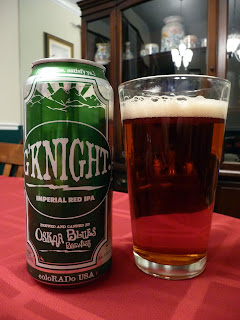
In the times of antiquity, the Greeks prepared a meal that consisted of grilling skewers of pork over pits of charcoal and flames. They referred to these pork skewers as ὀβελίσκος (
obeliskos), which is a diminuitive form of the ancient Greek word for "spit," ὀβελός (
obelos). References to
obliskos can be found in the literary works of Ancient Greeks such as Aristophanes, Xenophon and Aristotle.
At some point in culinary history of Ancient Greece, someone paired these grilled pork skewers with a slightly leavened, wheat bread. We commonly refer to that bread as pita, but when it was combined with the pork skewers, the Greeks referred to the dish as
kandaulos. Much like the
obliskos, there are references to the pork skewer/pita bread
kandaulos in ancient literary works, including the works of Homer.
Fast forward to today, if one wanted to find this dish while strolling the streets of a Greek city, such as Athens, one could walk into a
souvladzidika or souvlaki shop and ask for Souvlaki Hirino. I decided that I would turn my kitchen into that souvladzidika for one night and make this dish. Previously, I focused more on Persian cuisine, such as making
Kebab-e Jojeh (Chicken Kebabs) and
Kebab-e Chenjeh (Lamb Kebabs). These preparation of these dishes is very similar to Souvlaki Hirino. The meat is marinated for a period of time, from just a couple of hours to overnight, and then skewered. While the marinating process is common to these recipes, the ingredients used in the marinade reflect the cuisines of the countries and the ingredients available to their cooks. For example, the marinade for the Jojeh uses saffron, an ingredient that is available in the Middle East and, in particular, in Iran. By contrast, the Souvlaki Hirino uses mint and oregano, which are ingredients commonly associated with Greek cuisine.
When I made this dish, I decided to use the broiler as opposed to the gas grill. I admit that the choice was one of ease as opposed to authenticity. The broiler did its job, but I could not stop thinking about how grilling the kebabs would provide those slight singed edges that I like with grilled meats. I also decided to make a simple tzatziki-like sauce, which used yogurt, garlic, mint and cucumber, In the end, I really liked this dish, although I plan on grilling the pork skewers rather than using the broiler.

SOUVLAKI HIRINO (PORK KEBABS)
Serves 2-4
Ingredients (for the Souvlaki Hirino):
1⁄4 cup extra-virgin olive oil
1⁄4 cup red wine
2 tbsp. fresh lemon juice
1 tbsp. dried mint
1 tbsp. dried oregano
8 cloves garlic, smashed and
minced into a paste
1 bay leaf, finely crumbled
1 lb. trimmed pork shoulder,
cut into 1 1⁄4" cubes
4 9" wooden skewers
Kosher salt and freshly ground
black pepper, to taste
Lemon wedges, for serving
Ingredients (for the Yogurt Sauce):
1 cucumber (about 12 oz.)
1 1⁄2 cups yogurt
1⁄2 cup chopped fresh mint leaves
2 tbsp. extra-virgin sesame oil or
extra-virgin olive oil
2 cloves garlic, finely chopped
Kosher salt, to taste
Directions:
1.
Marinate the pork. In a medium bowl, whisk together oil, wine, lemon juice, mint, oregano,
garlic, and bay leaf; add pork and toss to coat. Cover and refrigerate
for 1 hour or overnight. Meanwhile, soak skewers in water.
2. Make the yogurt sauce. Meanwhile, make the yogurt sauce. Cut the ends off the cucumber and
peel it. Cut the cucumber in half lengthwise. Using a small spoon,
scrape out and discard the seeds from each half. Finely chop the
cucumber and transfer it to a bowl. Stir in the yogurt, mint,
oil, and garlic, and season with salt. Cover the sauce with plastic wrap
and refrigerate until ready to use. (The sauce can be made ahead and
refrigerated for up to 1 week.)
3.
Grill or broil the kebabs. Build a medium-hot fire in a charcoal grill or heat a gas grill to
medium-high. (Alternatively, arrange an oven rack 4" below the broiler
element and set oven to broil.) Thread about 4 to 6 pieces of pork onto each
skewer so that pork pieces almost touch each other. I like to leave a little space between the pieces of pork. Season with salt and
pepper and transfer to the grill (or, covering exposed ends of skewers
with foil, put skewers on a rack set over a foil-lined baking sheet).
Cook, turning often, until cooked through and slightly charred, about 10
minutes.
4. Plate the dish. Heat up a pita bread under the broiler for 1 minute on each side. Place the bread on the plate, spoon some of the yogurt sauce in the middle of the bread and place 1 to 2 skewers on the bread. (You can and probably should remove the pork from the skewers when you serve the dish). You can also serve the souvlaki with lemon wedges.
If you are looking for a wine to pair with this dish, check out a Greek wine, like the wines made with the Assyritiko grape. I paired a
Papantonis Meden Agen Agiorgitiko (2010), which paired perfectly with the Souvlaki Hirino.
ENJOY!
For more about the history of souvlaki, check out
Wikipedia.













